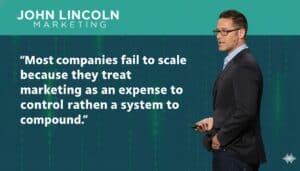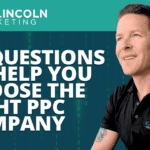
Why Compounding Growth Is the Most Undervalued Digital Marketing Strategy for Investors
Most companies in the $20 to $400 million stage are doing a lot of digital marketing, but very few feel confident that it is actually
Whether you’re a seasoned marketer or just starting out, conversion rate optimization (CRO) is a powerful tool that can boost your sales, leads, and overall online success.
Let’s break it down. Imagine 100 people visit your website. Ideally, you want as many of them as possible to convert, whether that means signing up for your email list, buying your product, or contacting you for a service. But what if only two percent of those visitors convert? That means you’re missing out on a huge opportunity.
Conversion rate optimization helps you bridge that gap by optimizing your website to encourage those visitors to take action. It’s all about understanding your audience, creating a smooth user experience, and making it crystal clear what you want them to do next.
Here’s the good news: CRO isn’t magic. It’s a data-driven process that involves testing different elements of your website and seeing what works best.
Let’s jump into some specific strategies you can implement right away in this CRO guide.
Landing pages are the workhorses of your website. They’re designed with a specific goal in mind, like getting someone to download an ebook or sign up for a webinar. Since these pages are often the first touchpoint someone has with your brand, it’s crucial to make a good impression. But with so many landing page templates out there, it can be overwhelming to know where to start.
Here are some key elements to optimize your landing pages for conversions:
Remember, landing pages are all about testing! Don’t be afraid to experiment with different layouts, headlines, and calls to action to see what gets the most conversions.
Local pages are designed to attract customers in your area. Think dentist offices, plumbers, or yoga studios. Here’s how to optimize your local pages to convert those nearby searchers:
Ecommerce pages are all about selling your products. The goal is to create a seamless buying experience that converts visitors into customers.
Here are some key elements to optimize your ecommerce pages:
Blog posts are a fantastic way to attract new visitors, establish yourself as an industry thought leader, and nurture leads. But how do you turn those casual readers into loyal fans who take action?
Here are some key elements to optimize your blog posts for conversions:
Remember, conversion rate optimization is an ongoing process. The strategies above are a great starting point, but what truly works best for your website will depend on your specific audience and goals. Here are some final tips to take your CRO efforts to the next level:
By following the tips in this guide to CRO and putting them into action, you can turn your website into a conversion machine. Remember, the key is to focus on providing a valuable and user-friendly experience for your visitors, and the conversions will naturally follow.
Welcome to John Lincoln’s personal website. You can learn about John Lincoln’s books, films, book him to speak and contact him. John is directly associated with many of the businesses mentioned on this website and freely discloses this information.

John Lincoln is CEO of Ignite Visibility, one of the top digital marketing agencies in the nation. Outside of Ignite Visibility, Lincoln is a frequent speaker and author of the books Advolution, Digital Influencer and The Forecaster Method. Lincoln is consistently named one of the top digital marketers in the industry and was the recipient of the coveted Search Engine Land “Search Marketer of The Year” award. Lincoln has taught digital marketing and Web Analytics at the University of California San Diego, has been named as one of San Diego’s most admired CEO’s and a top business leader under 40.
Want to get in touch with John Lincoln? Click Here To Reach Out.

Most companies in the $20 to $400 million stage are doing a lot of digital marketing, but very few feel confident that it is actually

Google Search Quality Rater Guidelines Compliance Checklist Google’s Search Quality Rater Guidelines (SQRG) are not a direct ranking algorithm, but they are the playbook human
Hey everybody, this is John Lincoln. It has been a while since I last updated this website. The last post here was on August 2,
 Top 16 Questions to Ask a PPC Company in 2024
Top 16 Questions to Ask a PPC Company in 2024 In 2024, choosing the right PPC company is not just about spending your advertising budget. You want to make every